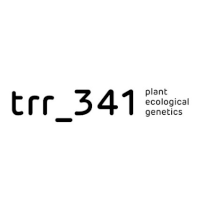Scanning for past and ongoing adaptation
B1: Ecological diversification in urban habitats: A comparative approach across four ruderal Brassicaceae species
Juliette de Meaux and Anja Linstädter
Plants growing in the city are exposed on a miniature scale to the challenges that global environmental change will impose. In this project, we will compare the genetic basis of urban adaptation in four species of the Brassicaceae family that grow in the city of Cologne. We will compare the environmental factors that promote their establishment and their growth in the city, quantify the level and distribution of genetic variation within and across habitats, test whether individual populations are locally adapted and determine the genes that promote population growth in specific environmental conditions.
B2: Adaptation of perennial Arabis alpina along a latitudinal gradient in Scandinavia
George Coupland and Andrea Fulgione
How do plants adapt to high-latitude environments that are extremely stressful and allow only very short growing seasons? We will address this question by studying fifteen Scandinavian populations of Arabis alpina along an approximately 1400 km transect from southern to northern Norway. We have obtained genomic sequences from more than 300 plants originating from these populations. We will use these sequences to model the postglacial colonization history of Scandinavia by A. alpina, to identify genomic regions associated with adaptation to high latitudes and to determine the role of flowering traits in this process.
B3: Adaptation to the afroalpine environment in Brassicaceae species with contrasting ecological strategies
The alpine sky islands of Eastern Africa offer a unique opportunity to study convergent adaptation across multiple species and mountain ranges. Populations of the stress-tolerant A. alpina and the ruderal A. thaliana co-occur in these mountain ranges. We will investigate the demographic history of these populations, compare their variation for traits exposed to selective pressures that vary with elevation and examine their genetic architecture. This project will shed light on the history of convergent adaptation in two ecologically different species exposed to the same challenging environment.
B4: Adaptation via geneflow in endangered Arabis floodplain species
When ecologically different species naturally interbreed in specific areas of their distribution, it becomes possible to determine the genetics of their ecology under entirely natural conditions. The two endangered species, Arabis nemorensis and Arabis sagittata hybridize naturally today in a unique site located on the banks of the Rhine. We will take advantage of this singular hybridization hotspot to conduct a genetic analysis of inter-specific variation in functional traits and plant performance in situ and reveal how this variation impacts the dynamics of hybridization. Understanding the consequences of contemporaneous gene flow may help protect species from extinction.
B5: Evolutionary signatures in gene copy-number variation in Brassicaceae
The number of gene copies is often particularly variable in plant genomes. Although changes in gene copy number have often been shown to fuel adaptation, we lack comprehensive models to tell when they evolved in response to selection. This project will investigate the extent to which natural selection contributes to gene copy number variation within and between species in the Brassicaceae family. We will integrate empirical data, newly developed theoretical models as well as computer simulations under neutral and selective processes to model the role of copy number variation in selected plant gene families for plant adaptation.
B6: The role of polygenic adaptation and pleiotropy in the establishment of trait-syndromes
Markus Stetter and Joachim Krug
The ecological specialization of plants generally relies on the joint adjustment of multiple traits: the so-called adaptive trait syndromes. This project will develop novel theory about how multidimensional quantitative traits evolve and adapt to new environments. We will further perform simulations and test our predictions deriving our parameters from the large-scale empirical data collected in the CRC. We will provide a new theoretical framework for analyzing patterns of covariation between ecologically important traits and infer their genetic architecture as well as their coevolution.
B7: Adaptation in ecologically diverse Hordeum species: a comparative intra- and inter-species approach
Maria von Korff Schmising and Anna Lampei-Bucharova
Grasses are the most successful plant family in terms of their global occurrence and ecological dominance in many ecosystems, and have given rise to our major crops. We will use the grass clade Hordeum which includes 33 ecologically diverse species and the human bred crop barley to identify trait and genetic variation underlying the ecological diversification, local adaptation, and differences in geographic range of wild and cultivated species. We will compare to what extent human and natural selection target the same traits and genes. Understanding genetic adaptation in wild species might in turn reveal novel adaptive variation to help crop improvement.
